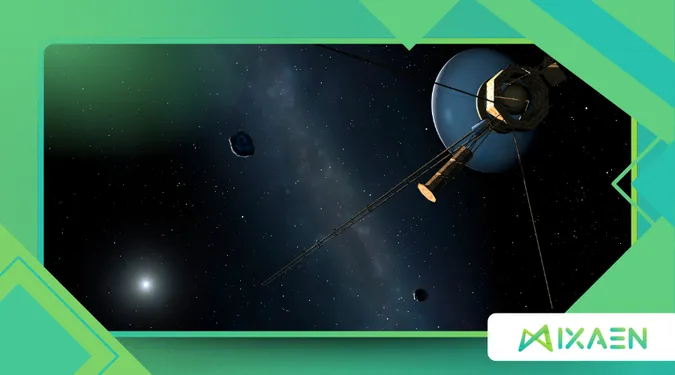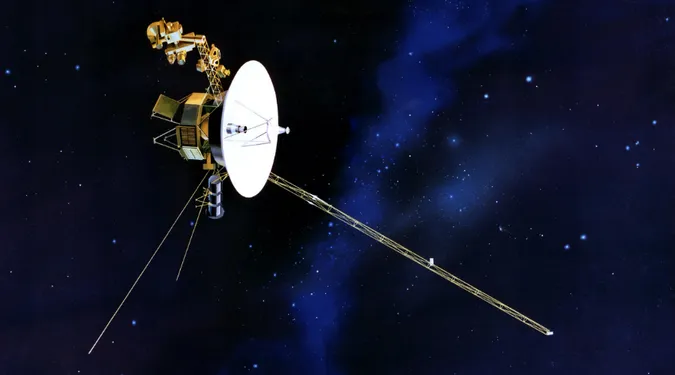The Impact of the Voyager Probes on Modern Space Exploration

When NASA launched the Voyager probes in 1977, few could have predicted the profound and lasting impact of the Voyager probes on space exploration.
Anúncios
These twin spacecraft, designed to study the outer planets, have far exceeded their original mission, becoming pioneers of interstellar space and reshaping our understanding of the cosmos.
Their journey, spanning over four decades, has not only provided groundbreaking scientific data but also inspired generations to look beyond our planet.
Today, as we stand on the brink of a new era in space exploration, the legacy of the Voyager missions continues to influence how we approach the unknown.
The Voyager probes have become a symbol of human ingenuity and perseverance.
Their success has encouraged other space agencies, such as ESA (European Space Agency) and CNSA (China National Space Administration), to embark on ambitious exploration missions, further expanding our reach into the cosmos.
The Voyager Probes: A Mission Beyond Expectations
The primary goal of the Voyager program was to explore Jupiter and Saturn, but the spacecraft’s durability and ingenuity allowed them to venture further.
Voyager 1 and Voyager 2 have since become the first human-made objects to enter interstellar space, a milestone that underscores their unparalleled contribution to science.
The impact of the Voyager probes lies not only in their discoveries but also in their ability to push the boundaries of what we thought possible.
For instance, Voyager 1’s famous “Pale Blue Dot” image, taken in 1990, offered a humbling perspective of Earth as a tiny speck in the vastness of space.
This image has since become a symbol of our place in the universe and a reminder of the fragility of our planet.
Moreover, the Voyager missions have inspired art and literature, reflecting humanity’s quest for knowledge and our desire to understand our existence.
The profound messages conveyed by these images continue to resonate, reminding us of the importance of protecting our home planet.
+ Space Exploration: Future Missions to Mars
Scientific Discoveries That Changed the Game
The impact of the Voyager probes on planetary science cannot be overstated.
Their observations have led to numerous discoveries, including active volcanoes on Jupiter’s moon Io, the intricate ring systems of Saturn, and the bizarre magnetic fields of Uranus and Neptune.
These findings have not only expanded our knowledge of the solar system but also challenged existing theories, prompting scientists to rethink their models of planetary formation and behavior.
One of the most significant contributions of the Voyager missions is their role in the search for extraterrestrial life.
The discovery of potential subsurface oceans on Europa (Jupiter’s moon) and Enceladus (Saturn’s moon) has made these celestial bodies prime targets for future missions.
The impact of the Voyager probes in this area is evident in NASA’s upcoming Europa Clipper mission, which aims to explore the habitability of Europa’s ocean.
These discoveries have sparked a renewed interest in astrobiology, leading to interdisciplinary collaborations among scientists worldwide.
As we seek to answer fundamental questions about life beyond Earth, the groundwork laid by the Voyager missions remains invaluable.
For further insights into astrobiology, you can visit NASA’s Astrobiology page.
Technological Innovations Inspired by Voyager
The Voyager probes were equipped with cutting-edge technology for their time, including the Golden Record—a time capsule of sounds and images intended to communicate the story of Earth to potential extraterrestrial civilizations.
This innovative approach to interstellar communication has inspired modern projects like Breakthrough Starshot, which aims to send tiny probes to nearby star systems.
Moreover, the longevity and reliability of the Voyager spacecraft have set a high standard for space engineering.
Their use of radioisotope thermoelectric generators (RTGs) for power has become a model for missions requiring long-term energy sources, such as the Curiosity rover on Mars.
The impact of the Voyager probes on technology extends beyond space exploration, influencing advancements in telecommunications, computing, and materials science.
For instance, the algorithms developed for data compression in the Voyager missions have found applications in various fields, including digital media and telecommunications.
As technology continues to evolve, the legacy of the Voyager probes serves as a reminder of the importance of innovation in overcoming challenges in space exploration.

The Cultural and Philosophical Legacy
Beyond science and technology, the Voyager missions have left an indelible mark on culture and philosophy.
The Golden Record, curated by a team led by Carl Sagan, represents humanity’s first intentional attempt to communicate with other civilizations.
It includes music, greetings in 55 languages, and images depicting life on Earth.
This endeavor has sparked discussions about our place in the universe and the ethics of interstellar communication.
The impact of the Voyager probes on popular culture is also evident in their portrayal in movies, books, and art.
They have become symbols of human curiosity and resilience, embodying our desire to explore the unknown.
This cultural resonance has helped sustain public interest in space exploration, ensuring continued support for ambitious projects like the James Webb Space Telescope and the Artemis program.
For more information on the cultural significance of the Golden Record, check out The Golden Record.
Voyager’s Role in Shaping Modern Space Exploration
The success of the Voyager missions has demonstrated the value of long-term, exploratory missions.
Their ability to adapt to unforeseen challenges—such as navigating the complex gravitational fields of the outer planets—has set a precedent for future missions.
The impact of the Voyager probes is particularly evident in the planning of missions to the outer solar system, such as the Europa Clipper and the proposed Triton Hopper.
Additionally, the Voyager program has highlighted the importance of international collaboration in space exploration.
The data collected by the probes have been shared with scientists worldwide, fostering a global community of researchers dedicated to understanding the cosmos.
This spirit of cooperation continues to drive projects like the International Space Station and the Square Kilometre Array.
As space exploration becomes increasingly collaborative, the lessons learned from the Voyager missions will guide future partnerships and initiatives.
Challenges and Lessons Learned
Despite their successes, the Voyager missions have also faced challenges.
As the probes venture further into interstellar space, maintaining communication with Earth becomes increasingly difficult.
NASA’s Deep Space Network, which tracks the Voyagers, must contend with the weakening signals from the spacecraft, which are now over 14 billion miles away.
These challenges have provided valuable lessons for future missions.
For example, the need for robust communication systems has led to advancements in antenna technology and signal processing.
The impact of the Voyager probes on mission planning is evident in the design of the Parker Solar Probe, which incorporates lessons learned from Voyager’s experiences with extreme environments.
Moreover, the challenges faced by Voyager have prompted discussions about the need for better contingency planning in future missions.
By learning from past experiences, we can enhance the resilience and success of upcoming space exploration endeavors.

++ How the Artemis Project Will Return Humanity to the Moon
The Future of Interstellar Exploration
As the Voyager probes continue their journey into the unknown, they pave the way for future interstellar missions.
Concepts like solar sails, nuclear propulsion, and laser-driven probes are being explored as potential methods for reaching nearby star systems.
The impact of the Voyager probes on these efforts is undeniable, as they have demonstrated the feasibility of long-duration space travel and the value of exploring beyond our solar system.
One of the most exciting prospects is the possibility of sending a mission to Proxima Centauri, the closest star system to Earth.
While such a mission remains decades away, the groundwork laid by the Voyager program has made it a tangible goal.
The impact of the Voyager probes on interstellar exploration will continue to be felt for generations to come.
As we envision the future of space travel, the legacy of Voyager serves as a beacon of inspiration, reminding us of the vast possibilities that lie ahead.
Tables: Key Contributions of the Voyager Probes
| Discovery | Significance |
|---|---|
| Active volcanoes on Io | First evidence of active volcanism beyond Earth |
| Complex ring systems of Saturn | Revealed intricate structures and dynamics of planetary rings |
| Magnetic fields of Uranus & Neptune | Challenged existing theories of planetary magnetism |
| Potential oceans on Europa & Enceladus | Highlighted the possibility of extraterrestrial life |
| Technological Innovation | Impact |
|---|---|
| Golden Record | Inspired modern interstellar communication projects |
| RTG Power Systems | Set a standard for long-term energy solutions in space |
| Deep Space Network | Advanced global collaboration in space communication |
Conclusion: A Legacy That Endures
The impact of the Voyager probes on modern space exploration is immeasurable.
From their groundbreaking scientific discoveries to their cultural and philosophical influence, these spacecraft have reshaped our understanding of the universe and our place within it.
As we look to the future, the lessons learned from the Voyager missions will continue to guide our efforts to explore the cosmos.
In the words of Carl Sagan, “Somewhere, something incredible is waiting to be known.”
The Voyager probes have shown us that the incredible is within our reach, and their legacy will inspire us to keep reaching for the stars.
Their journey represents not just a scientific endeavor, but a testament to humanity’s unyielding quest for knowledge and understanding.
As we embark on new missions, we carry with us the spirit of Voyager, ever eager to uncover the mysteries of the universe.
